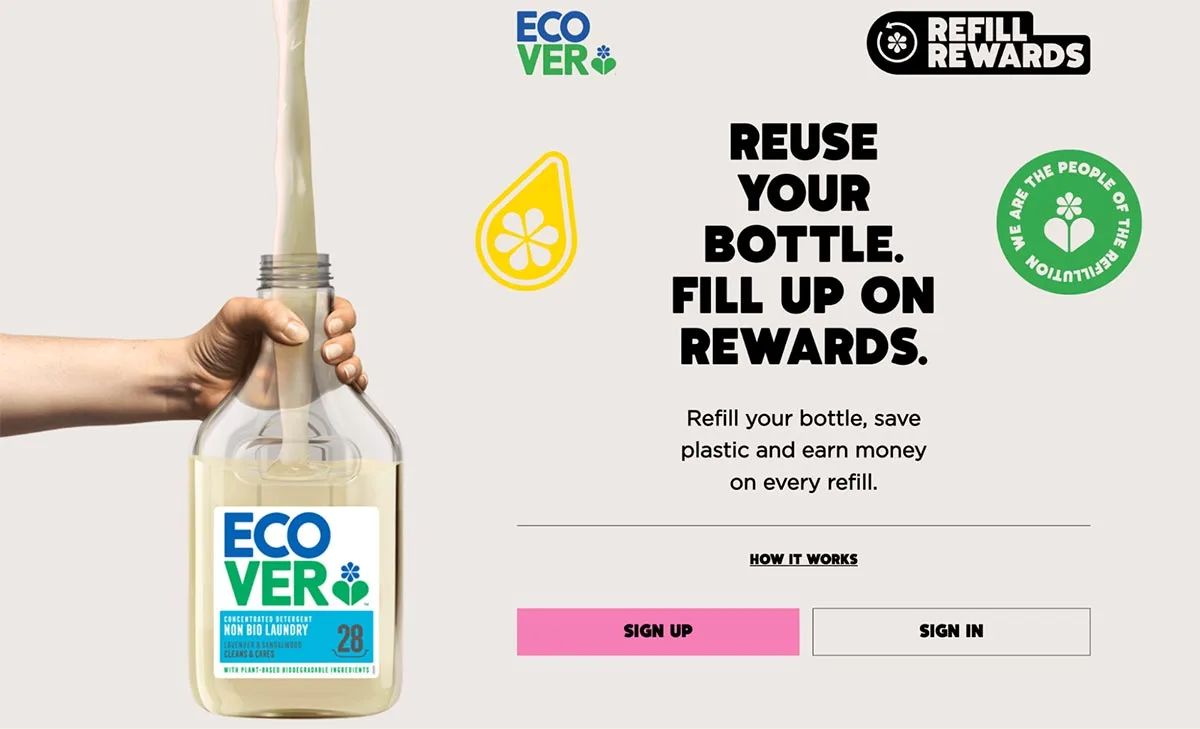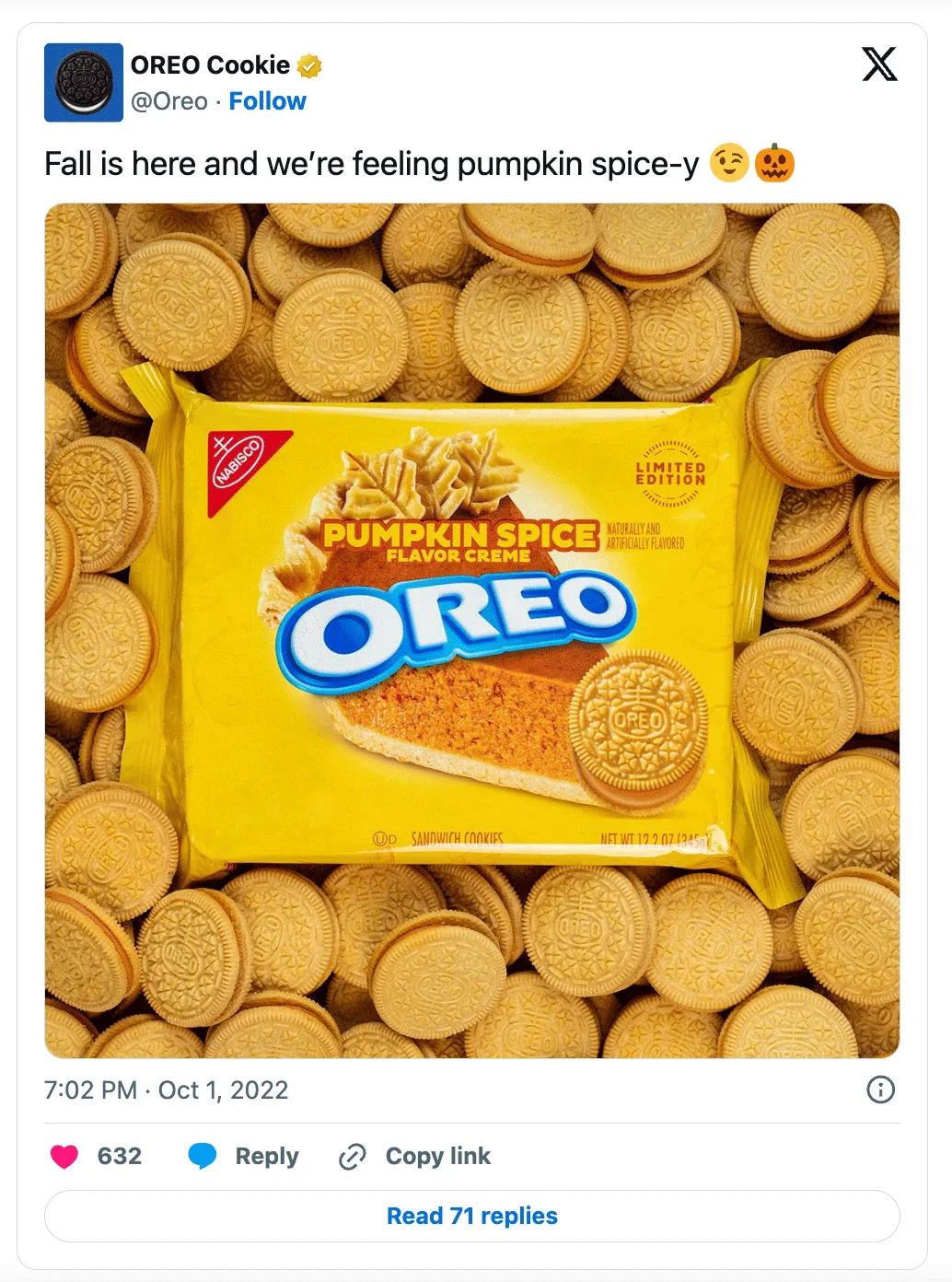How enterprises can promote product sales: 5 proven ideas

With the competition getting fiercer by the day and customer expectations shifting constantly, mastering the art of product sales isn’t just helpful—it’s make or break. A product’s success hinges on how enterprises optimize and refine their sales processes based on data-driven insights and customer feedback.
But in a landscape where countless brands vie for attention, how do you rise above the noise?
The answer lies in crafting a sales strategy that is as unique as it is compelling. By leveraging the right strategies, enterprises can differentiate themselves from other brands and boost product sales. But first, it’s important to understand what the customer journey looks like and the hidden factors that can influence a purchasing decision.
Understanding the influential forces on the customer journey
On the surface, enterprise marketing efforts may appear solely aimed at the end consumer—targeting them with advertising, promotions, and brand messaging to drive purchases. However, modern consumers don’t exist in a vacuum. They are influenced by a diverse array of stakeholders across their personal lives, both online and offline.
Many are the trusted voices of friends and family providing recommendations and reviews. Media and influencers’ opinions and endorsements carry weight. Retailers act as gatekeepers to the shopping experience. Cultural forces and community values also shape consumer identities and mindsets.
Effectively penetrating this ecosystem requires salespeople to go beyond simplistic promotion tactics to create customer relationships. They need to understand this complex, interlocking sphere of influence their target consumers navigate.
Who holds persuasive power, and what are their motivations? How do trusted authorities and narratives take shape? What are the underlying cultural contexts and tensions?
With these insights, sales leaders can choreograph full-spectrum messaging campaigns that build credibility and brand equity across all forms of outreach—social media platforms, search engine optimization (SEO), influencer marketing, and email marketing.
It’s about identifying the decision-makers at different touchpoints and amplifying the brand through an interconnected system of stakeholders—not just broadcasting to individual consumers in isolation. Much like in the cereal aisle where both kids’ appeal and parents’ approval are crucial, large enterprises need to consider the various people involved in influencing purchasing decisions throughout the customer journey.
And this is why generic mass marketing won’t cut it; enterprises must find smarter ways to reach their target market directly with personalized value propositions that resonate.
How enterprises can promote product sales: 5 practical solutions & real-life examples
The customer journey from prospect to purchase is complex—filled with challenges, opportunities, and crucial decision points. For large corporations looking to optimize their product sales, expertly navigating this journey is key.
But what does it take to successfully guide a potential customer from initial interest to final sale? Let’s explore how enterprises can promote product sales by making the customer journey smoother and quicker.
1. Align your solutions with stories
Stories resonate with us on a fundamental level; they can transform perceptions and instill emotions, making them an indispensable tool in marketing. A compelling story can elevate a product from a mere commodity to a piece of a larger, more meaningful narrative that consumers want to be part of.

Take Patagonia’s “Worn Wear” initiative, for example, which masterfully aligns its clothing product promotions with sustainability and responsible consumption. The campaign doesn’t just sell clothing; it sells a commitment to the environment and a lifestyle of mindfulness and durability.
Patagonia shares stories of well-loved garments and the adventures they’ve been on, reinforcing the idea that their products are not disposable but rather companions on life’s journey. This narrative fosters a deep connection with customers who share these values, turning them into brand advocates, which helps increase word-of-mouth promotions.
How can you harness the power of storytelling?
Keep the following in mind to make sure that your brand narrative aligns with your enterprise sales strategy:
- Craft a compelling origin story: Narrate the brand’s inception, the challenges faced, and how they were overcome. This can create an emotional bond with the audience as they become invested in the brand’s journey.
- Emphasize the product’s journey: Share the meticulous process behind your product development, its in-depth functionality, and the innovative materials used, showcasing the thought and expertise. This can elevate the perceived value and differentiate the brand in a crowded market.
- Leverage customer narratives: Feature real customer stories, highlighting how the product fits into their lives. This not only serves as social proof but also helps prospective customers envision the product in their own lives.
- Leverage user-generated content: Encourage customers to share their own stories and experiences with your brand on social media. Curate and amplify these authentic narratives to build a stronger sense of community and brand loyalty.
- Integrate storytelling into marketing: Tell these stories using various formats, like video documentaries, case studies, or podcasts. The goal is not just to inform but also to engage the audience on an emotional level.
Remember that storytelling isn’t a strategy in itself but a part of your broader promotional strategy. Make sure to streamline this large-scale promotional strategy based on your ideal customer profile, customer success reports, and feedback metrics to effectively improve sales.
2. Create incentives that encourage buying
Incentives, which are rewards or benefits offered to consumers, often play a crucial role in influencing purchase decisions. They can range from discounts and loyalty points to free samples or exclusive access to new products.
On the crowded shelves of a supermarket, where countless similar products compete for consumers’ attention, offering such incentives is one of the best ways for brands to quickly grab their attention. These are the thoughtful gestures that say, “We appreciate you,” turning a mundane transaction into a memorable experience. For instance, a brand might include a coupon for a future purchase inside the packaging or offer a buy-one-get-one-free deal on the eve of customers’ birthdays, turning a mundane transaction into a memorable experience. When executed effectively, these incentives can improve customer engagement and advocacy.
In fact, 72% of consumers have switched to a new brand that offers a better deal. This indicates that incentives not only have the potential to influence existing customer loyalty but can also attract new customers, making them a critical component in a brand’s marketing strategy.
Moreover, incentives can be tailored to the specific needs and preferences of different consumer segments, making them even more effective. For instance, a brand offering a discount on organic products might appeal to price-sensitive, health-conscious consumers, while a loyalty program could convert occasional shoppers to regular customers.
By understanding your target audience and tailoring incentives accordingly, your brand can ensure that your efforts are not only impactful but also resonate deeply with your customers—and could even lead to word-of-mouth referrals.

Take, for instance, the eco-friendly dishwasher brand Ecover. The brand encourages people to refill their bottles in exchange for refill rewards, which can then be converted into money. This initiative not only reinforces their commitment to sustainability but also provides a practical and ongoing benefit to the eco-conscious consumer.
But just introducing incentives isn’t enough. Advertising is crucial in increasing awareness about your brand’s incentives and persuading consumers to take action.
You can make use of Yelp Showcase Ads to highlight your incentives. Yelp Showcase Ads allow businesses to appear prominently above or below relevant search results as well as on your Yelp Business Page, ensuring the incentives are visible to consumers actively searching for related products or services. These ads can be tailored to specific categories and locations, which increases the chances of reaching your target audience.
What are the different types of incentives you can offer?
To engage and attract customers and differentiate yourself from your competitors, consider using any of the following incentives:
- Tiered loyalty rewards: Offer different levels of rewards based on customer spending or engagement.
- Limited-time offers (LTOs): Offer discounts or rewards for a limited time to create a sense of urgency and scarcity.
- Referral bonuses: Reward customers who refer friends and family.
- Personalized discounts: Base offers on customer preferences and purchase history.
- Seasonal gifts: Give complimentary items that align with holidays or seasons.
- Limited-edition products: Release exclusive items available for a limited time or in limited quantities.
- Subscription perks: Offer special benefits for subscribers, such as free shipping or samples.
- Bundled deals: Pair products for a reduced price, enhancing value.
- Gamified experiences: Reward points or badges for customer actions, redeemable for rewards.
- Birthday offers: Give special discounts or gifts on the customer’s birthday.
- Recycling incentives: Grant discounts or rewards for returning used products or packaging.
By offering diverse incentives, product-based enterprises can also improve customer retention by catering to a broad spectrum of consumer desires and motivations.
3. Build strategic alliances for cross-promotions
Cross-promotional marketing is a savvy move for brands looking to team up and tap into new customer bases. It’s a smart way for companies to break into new markets, introduce customers to products they might enjoy, and offer a more comprehensive experience. This approach isn’t just about getting more eyes on the products; it’s about combining forces to give customers a better, more integrated experience.
An excellent example is the collaboration between GoPro and Red Bull. Both brands resonate with adventure and extreme sports enthusiasts. By partnering, they conduct co-sponsored events and make use of cross-selling opportunities to offer exclusive content, like thrilling action footage from GoPro cameras used for Red Bull promotions. This partnership aligns perfectly with the adventurous spirit of their shared target demographics, enhancing the brand image of both companies.
If you’re planning such partnerships, you can use Yelp Co-Branded Showcase Ads to advertise on your partner’s Yelp Pages, even when you don’t have your own Yelp Page. These ads can include eye-catching images, videos, and detailed information about the incentives being offered. This can help you capture the attention of the consumers visiting your partner’s brand and give them a compelling reason to engage with both of you.
How can you cross-promote your products?
You can develop cross-promotional strategies to increase brand awareness with these steps:
- Find the right fit: Look for brands that share your values and have a similar audience but aren’t direct competitors. The partnership should feel natural to consumers.
- Complementary product bundles: Offer a package deal that combines products from each brand, providing a complete solution to a customer need. For example, a sunscreen brand could partner with a sunglasses company for a summer promotion.
- Joint promotional campaigns: Develop marketing campaigns that feature both brands. This could include shared advertising space, joint social media marketing campaigns, or co-branded events highlighting the partnership’s benefits to consumers.
- Shared loyalty rewards: Create a loyalty program that rewards customers for purchases across the partnered brands, encouraging cross-shopping and repeated engagement.
- Innovative co-branding: Introduce a new product or service that combines the strengths of both brands, like a special edition flavor or design, to captivate the market’s interest.
- Mutual storytelling: Use content marketing to tell the story of the partnership, emphasizing how the collaboration brings added value to the customer.
- Cross-channel promotion: Utilize each brand’s marketing channels, such as email lists, social media profiles, virtual events, or in-store displays, to promote the partnership and reach a wider audience.
By carefully selecting the right partners and crafting a cross-promotional strategy that offers tangible benefits, enterprises can create a win-win situation that captivates new audiences and deepens engagement with existing customers.
4. Capitalize on seasonal promotions
Seasonal and event-driven promotions are smart tactics for businesses that want to sell more when people are ready to buy. During holidays and special events, customers are on the lookout for products and deals that align with such occasions. If a company can line up its marketing with these occasions, it’s like catching a wave—suddenly, everyone notices what they have to offer.
It’s not just about making more sales; it’s also about connecting with customers’ festive moods. When brand’s promotion fits neatly into a holiday or a seasonal event, it feels right to the customer, making them more likely to get involved and purchase.
Oreo does this perfectly by launching their limited-edition flavors corresponding to seasons and holidays. For example, their Pumpkin Spice and Snickerdoodle cookies, released during the fall, capture the essence of autumn and the public’s obsession with all things pumpkin spice. This not only improves sales during the season but also generates buzz and anticipation for the brand’s next seasonal offering.
What types of seasonal promotions can you implement?
Here are a few seasonal promotional ideas your enterprise sales team can leverage based on your products:
- Holiday-themed packaging: Release special packaging that reflects the holiday season, like limited-edition designs for Christmas, Halloween, or Valentine’s Day.
- Summer refreshment campaigns: Launch campaigns for beverages or snacks catering to picnics, barbecues, and beach outings.
- Back-to-school bundles: Offer bundled products at a discount, such as snack packs or breakfast items, during the back-to-school season.
- Winter wellness products: Promote health-focused products, like vitamins and herbal teas, during flu season, or even upsell complete winter packages.
- Spring cleaning supplies: Capitalize on the spring cleaning trend by offering promotions on household cleaning supplies.
- Fall harvest flavors: Introduce or highlight products with seasonal flavors, like pumpkin spice or apple cinnamon, in the autumn.
- New year, new you: Encourage resolutions with health and wellness products in January, streamlined with custom solutions promoted based on the audience’s preferences.
- Event tie-ins: Create promotions around major sporting or entertainment events with appropriate snack foods or beverages.
- Spring landscaping deals: Provide discounts on garden design and landscaping services to help homeowners get their yards summer-ready.
- Summer fitness specials: Promote outdoor fitness classes or gym memberships to help clients get in shape for the warmer months.
- Winter car care packages: Offer services crucial for winter driving, like tire changes, battery checks, and antifreeze top-ups.
Make sure to work proactively to come up with different seasonal promotions for events and holidays around the year. Capitalize on consumer trends and previous performance metrics to create your sales strategy to maximize brand recognition.
5. Tailor your brand to local markets
While national and global reach is undoubtedly impactful, there’s an undeniable power in connecting with consumers at a local level. Don’t overlook the strength of engaging with your target audience right in their own backyards. With strong multi-location marketing, large companies can reach out to local audiences to create personal connections and foster long-term relationships.
Take the popular Coca-Cola “Share a Coke” campaign, for example. While the overall concept was a global success, the brand took it a step further by printing popular names specific to various regions and neighborhoods on their bottles. This simple localization tactic made the campaign feel personalized and relevant to consumers in their communities.

Coca-Cola has also branched out further to create local experiences by introducing a variety of Coca-Cola flavors and variations around the world—like “Coca-Cola Cherry Zero” in the United States, “Coca-Cola Zero Sans Caféine” in France, and “Coca-Cola Peach” in Japan.
Such sales strategies appealing to the local audience can help you branch out to new markets while retaining the essence of your brand.
How can you effectively leverage local engagement?
You can effectively engage with your local audiences with these basic steps:
- Collaborate with local retailers: Partner with independent or regional grocery chains for exclusive in-store promotions, demos, or product launches.
- Sponsor community events: Get involved with local festivals, fairs, or celebrations by offering product samples or branded experiences.
- Spotlight local stories: Feature customer reviews and testimonials from local consumers or businesses in your marketing plan.
- Customize product offerings: Introduce limited-edition or region-specific product variants to cater to local tastes and preferences.
- Participate in local causes: Show your commitment to the community by participating in or sponsoring local charity events, environmental clean-ups, or educational programs. This not only builds goodwill but also increases brand visibility.
- Advertise on the local listings: Use Yelp advertising solutions to target customers within certain areas with targeted local ads, personalized to the community’s preferences.
By actively engaging with the local community through these strategies, enterprise companies can effectively build brand loyalty and drive sales within their target markets.
Sell smart, sell more
There are hundreds of ways to sell products. But the most effective, long-lasting strategy is to truly understand what your customer needs and design your enterprise sales process around it. Customers crave authenticity and shared value, which is why enterprises need to embrace a customer-centric sales strategy while establishing a sustainable ecosystem.
By deeply understanding customer aspirations, values, and pain points, enterprises can develop promotions that resonate with their customers.
However, it can be challenging for multi-location enterprises to create a customer-centric strategy that focuses on all its target markets. If that’s you, check out these five advertising solutions for national growth that can help you overcome this challenge and effectively leverage various advertising solutions to drive your expansion plans.
